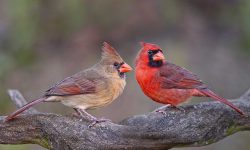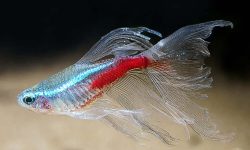As winter sets in, most birds instinctively migrate south in search of warmth and food. Hawks, however, defy this pattern with a remarkable range of behaviors. Some travel across continents, others move only short distances, and many choose not to migrate at all. These decisions are shaped by species traits, habitat, food availability, and changing environmental pressures. This article delves into the complexity of hawk migration, their anatomy, survival tactics, and their unique ability to adapt to both natural ecosystems and human-shaped landscapes.
Understanding Hawk Migration
What Influences Hawk Migration
Hawk migration patterns are more flexible and less predictable than those of many other birds. While some hawk species travel long distances to escape the cold, others stay in their home range during the winter. This variation depends on several key factors.
One of the most important is food availability. Hawks are predators that rely on animals like mice, rabbits, small birds, and reptiles. In areas where prey stays active during the winter, hawks may choose not to migrate. But in colder regions, where snow or ice makes hunting difficult, they are more likely to move south in search of food.
Species differences also play a major role. For example, the broad winged hawk often travels from North to South America, while the red tailed hawk may stay or migrate only short distances depending on conditions.
Habitat has a strong influence too. Hawks living in open fields or forests may need to leave if snow covers the ground and hides their prey. In contrast, those in urban or mixed environments—where pigeons and rodents are common year-round—often remain in place.
Environmental pressures like storms, sudden temperature changes, and human development can also shape migration behavior. A snowstorm might force hawks to relocate briefly. In recent decades, climate change has altered traditional migration patterns, with some hawks traveling shorter distances or not migrating at all.
Another factor is daylight length, which triggers hormonal changes that prepare hawks for migration. Still, the ultimate decision usually depends on immediate local conditions, especially food.
In summary, hawk migration is influenced by a complex mix of instinct, environment, and adaptation. Their flexible behavior helps them thrive in both wild and human-shaped landscapes.
Types of Hawk Migration
Hawks can be grouped into three main patterns of migration based on their seasonal behavior.
Fully migratory hawks travel long distances, sometimes crossing entire continents, to reach warmer regions during winter. These birds rely heavily on seasonal changes and typically move between well-defined breeding and wintering grounds.
Partially migratory hawks show more flexible behavior within the same population. In these cases, some individuals migrate while others remain in place, depending on factors like local climate and food availability.
Non migratory hawks stay in the same region all year. These birds are usually found in areas with stable weather and a consistent food supply throughout the seasons, such as coastal zones or mild lowlands.
Interestingly, this range of migration styles can be observed even within a single species. For example, red tailed hawks living in Canada often migrate south during winter, while those in California may stay in the same area year-round due to the region’s milder climate and abundant prey.
Hawk Vision and Hunting in Winter
Anatomy of the Hawk Eye
Hawks have some of the sharpest vision in the entire animal kingdom. Their eyes are large relative to the size of their heads and are located at the front, giving them binocular vision and excellent depth perception. This is essential for targeting prey accurately while soaring high above the ground.
A particularly fascinating aspect of a hawk’s vision is the presence of dual foveae in each eye. While humans have only one fovea—the part of the retina responsible for sharp central focus—hawks have two foveae per eye. This unique adaptation allows them to detect and follow prey not only directly ahead but also to the side, all with incredible clarity. It gives them a visual edge whether they’re scanning wide landscapes or zeroing in for a strike.
Color Vision and UV Sensitivity
Hawks have an exceptionally high concentration of cone cells in their retinas—up to one million per square millimeter, compared to only about two hundred thousand in humans. This gives them the ability to see with extraordinary clarity and perceive a wider range of colors.
Beyond visible light, hawks can also detect ultraviolet light. This rare visual ability allows them to spot urine trails or fur remnants left by small mammals, offering a crucial advantage when prey is scarce during the colder months.
Energy and Survival in Cold Climates
Cost of Migration vs. Staying
Migration is a high energy and high risk undertaking. Hawks face challenges such as storms, unfamiliar terrain, and an increased chance of injury or death during long-distance travel. For some individuals, the energy spent on migration may exceed the cost of staying in place—especially if they can find enough food locally.
When food is available, many hawks choose to remain through winter. This helps them conserve energy for critical tasks in spring, such as breeding and defending territory. Staying put also allows a hawk to maintain a familiar hunting ground, reduce competition, and begin nesting earlier than migrants.
However, this strategy only works if the environment stays stable and supportive. Sudden changes in weather, prey availability, or human activity can quickly make a once-safe area unsuitable for survival.
Winter Hunting Strategies
In areas where prey is less active, hawks adapt by changing their hunting behavior. They might hunt at different times of day or switch to alternative prey. Some hawks follow snowplows or livestock to catch rodents stirred up by movement. In cities, urban hawks often rely on animals like pigeons, squirrels, and other year-round species.
Adaptability is essential for winter survival. Hawks that can adjust their habits and respond to shifting conditions are more likely to remain in place rather than migrate.
Species-Specific Behavior
Red-Tailed Hawk
The red-tailed hawk is one of the most familiar and widespread birds of prey in North America. Found from Canada to Panama, it has adapted to an impressive variety of landscapes—including forests, grasslands, mountains, farmland, and even urban areas. This wide range is made possible by the species’ exceptional behavioral and ecological flexibility.
One of the most striking features of the red-tailed hawk is its partial migration. In northern regions like Canada or the northern United States, many individuals migrate south in autumn to avoid harsh winters and find more reliable food sources. These hawks may travel hundreds or even thousands of kilometers to reach milder climates.
In contrast, red-tailed hawks living in California, the southern U.S., or Mexico often remain in the same territory year-round. These areas offer a stable climate and a steady supply of prey, such as rodents, rabbits, and pigeons. Because food is abundant and winters are mild, migration is not necessary for survival.
Interestingly, even within a single region, different individuals may make different choices. Some may stay put while others of the same age and species migrate—highlighting how individual behavior can be influenced by local conditions, access to food, and even past experience.
This variability makes the red-tailed hawk an excellent example of how migration is not strictly determined by species, but shaped by a complex interaction between environment, climate, resource availability, and individual adaptability.
Cooper’s Hawk
Historically, the Cooper’s hawk was known as a forest-dwelling predator, typically found in wooded areas where it hunted small birds and mammals. However, in recent decades, this species has shown remarkable adaptability, thriving in urban and suburban environments across North America.
Many Cooper’s hawks now remain in cities year-round, using parks, tree-lined streets, and even backyards as their new hunting grounds. A major reason for this shift is the widespread use of bird feeders in residential areas, which attract a steady stream of songbirds—the Cooper’s hawk’s primary prey. This reliable food source, combined with the relatively mild climate of many urban regions, allows them to stay in place rather than migrate.
As a result, the species is becoming increasingly non migratory, especially in warmer parts of its range. While some individuals in colder climates may still migrate seasonally, more and more are choosing to remain local, taking advantage of the urban ecosystem and the opportunities it provides.
Swainson’s Hawk
In contrast to more adaptable or resident hawks, the Swainson’s hawk is a true long-distance migrant, known for one of the most impressive migration journeys among raptors. It breeds throughout western North America, especially in prairie and open grassland regions, and travels thousands of kilometers to spend the winter in Argentina and other parts of South America.
This dramatic seasonal movement is driven largely by the hawk’s diet. Unlike many other raptors, the Swainson’s hawk relies heavily on large insects, such as grasshoppers, dragonflies, and beetles, especially during the non-breeding season. These food sources vanish with colder temperatures, making migration not just beneficial, but essential for survival.
The journey itself spans up to 14,000 kilometers round-trip, taking the hawks across diverse landscapes, including mountains, deserts, and tropical regions. Along the way, Swainson’s hawks form large flocks, sometimes numbering in the thousands, creating a spectacular sight during peak migration.
Their highly specialized food preferences and strong migratory instinct make the Swainson’s hawk a powerful example of how some species are finely tuned to seasonal change, relying on migration as a life-or-death strategy.
Rough-Legged Hawk
The rough-legged hawk is a striking example of a fully migratory raptor. It breeds in the Arctic tundra during the summer months, where it nests on cliffs and rocky outcrops, hunting small mammals like lemmings and voles.
However, as winter approaches and the Arctic landscape freezes, conditions become too harsh to survive. Temperatures plummet, daylight disappears, and prey becomes extremely scarce or inaccessible under snow and ice. Unlike more adaptable hawks, the rough-legged hawk cannot remain in its breeding grounds through the cold season.
Instead, it undertakes a long migration south, typically spending the winter in the northern United States, where it hunts over open fields, plains, and marshlands. Its preference for open habitats during both breeding and wintering seasons is one of its distinguishing traits.
This annual journey is not optional—it’s a survival necessity. The rough-legged hawk’s dependence on specific prey and habitat conditions makes it highly sensitive to seasonal changes, illustrating how migration is vital for species living in extreme northern environments.
Changing Patterns in Modern Times
Climate Change and Migration
As global temperatures rise, hawks are beginning to shift their migration patterns. Warmer winters in regions that were once too cold for year-round survival are now allowing more hawks to remain through the winter, rather than migrate south.
While this may seem like an advantage, it introduces a new set of ecological challenges. For one, prey availability may not increase at the same rate as temperatures, leading to food shortages even in milder winters. Additionally, more hawks remaining in one area can result in increased competition—not only among hawks themselves but also with other raptor species.
Climate change may also disrupt breeding cycles, as the timing of nesting and prey abundance becomes less predictable. Over time, these shifts could reshape hawk population dynamics, forcing species to adapt quickly or face long-term survival risks.
Urban Expansion and Adaptation
As urban areas continue to grow, they create new opportunities—and challenges—for wildlife. For hawks, cities offer a surprising combination of warmth, shelter, and consistent food sources, especially during winter months. The urban heat island effect keeps temperatures higher than surrounding rural zones, reducing the risks associated with cold weather.
Many hawks are now adapting to these man-made habitats. Skyscrapers and tall buildings mimic the natural cliffs they use for nesting and perching. City parks, green belts, and suburban neighborhoods attract prey like pigeons, squirrels, and rats, providing a reliable food supply year-round.
As a result, hawks that previously migrated seasonally are now adopting more sedentary lifestyles. Species like the Cooper’s hawk and red-tailed hawk are increasingly seen in urban centers, even in winter. This shift not only reflects their behavioral flexibility but also highlights how human development is reshaping natural migration patterns.
However, urban living also comes with risks: collisions with buildings, vehicle strikes, and exposure to toxins are growing concerns. Even so, many hawks are proving to be highly resilient in the face of modern change.
Impacts on Ecosystems
Whether hawks choose to stay year-round or migrate seasonally can significantly influence the balance of local ecosystems. Resident hawks maintain a steady predation pressure on small mammals like mice, voles, and rabbits, helping regulate their populations throughout the year. This continuous presence can reduce the likelihood of rodent overpopulation, which benefits both agriculture and native plant communities.
In contrast, migratory hawks often arrive during seasonal prey booms, such as spring surges in insect or songbird populations. Their timing allows them to take advantage of temporary abundance, while also contributing to the natural checks and balances within those food webs.
Changes in hawk migration patterns—whether due to climate change, urbanization, or habitat shifts—can create ripple effects across ecosystems. An increase in resident hawks, for example, might lead to declines in certain bird species that nest in winter, or it may intensify competition among predators. Conversely, if migratory hawks arrive too early or late due to shifting climates, they may miss their peak prey availability, which can weaken their survival and impact other species that rely on the same food sources.
Ultimately, hawks serve as important indicators of ecosystem health, and changes in their movement patterns offer valuable insight into the broader ecological consequences of environmental change.
Tracking Hawk Movements
Satellite and GPS Technology
Scientists use small tracking devices to monitor hawk migration in real time. These tools provide data on flight paths, altitude, and stopover sites. This technology has revolutionized our understanding of raptor ecology and helped identify critical habitats for conservation.
Banding Programs
Bird banding has been used for decades to study hawk movement. Individual birds are marked with unique bands, and when recaptured or observed later, researchers learn about their travel routes, lifespan, and habitat preferences. Banding has confirmed that not all hawks migrate, and some return to the same wintering spot every year.
Citizen Science Contributions
Projects like HawkWatch International and eBird encourage bird watchers to report hawk sightings. These observations help map migration corridors, population trends, and unusual behavior, such as hawks overwintering in unexpected regions.
The Bigger Picture
Hawk Behavior Reflects Ecosystem Health
Hawks are apex aerial predators. Their presence, absence, or behavioral shifts often reflect broader environmental changes. A growing number of non-migratory hawks can signal warming climates or habitat stability. On the other hand, sudden migration surges might suggest ecosystem stress, food shortages, or weather extremes.
Adaptation and Evolution
The fact that some hawks migrate while others don’t speaks to their evolutionary success. Their ability to read environmental cues, adapt diets, and exploit new territories allows them to survive across a range of conditions. This behavioral flexibility will become even more important in the face of accelerating climate change.
Conclusion
The idea that all hawks fly south for winter is a myth rooted in oversimplification. In truth, hawks display a spectrum of behaviors based on species, geography, climate, and food availability. Some fly thousands of miles, others remain close to home. Some change habits year to year, while others follow ancestral paths passed down through generations.
Understanding the complexities of hawk migration helps us appreciate the resilience and intelligence of these birds. It also offers insights into the broader challenges faced by wildlife in a rapidly changing world. Hawks don’t always fly south and that’s a testament to their adaptability, not an exception to the rule.






